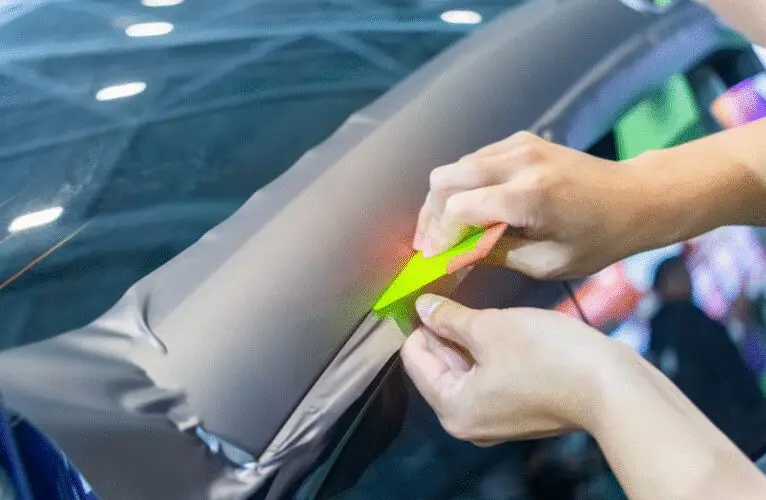Top Benefits of Paint Protection Film for Car Owners

Quick Answer
Paint protection film has become a trusted solution for drivers seeking to preserve their vehicle’s original finish. It forms a durable, nearly invisible barrier that absorbs impacts from road debris, bird droppings, and minor abrasions. Unlike wax or sealants, it doesn’t wear off with regular washing and can self-repair light surface scratches under heat. Many find it especially valuable in regions with harsh weather, gravel roads, or heavy urban traffic. The film maintains gloss and resale value without altering the car’s appearance. Properly installed, it lasts for years with minimal upkeep, making it a practical long-term choice for conscientious owners.
Introduction
Your car isn’t just transportation – it’s a reflection of care, routine, and sometimes, a significant financial investment. Every morning, it faces the same risks: gravel kicked up by semis, tree sap falling from parking lot branches, the accidental brush of a shopping cart, or the slow fade of UV exposure. These aren’t occasional mishaps – they’re daily exposures that quietly dull even the most pristine paint.
That’s where a reliable ppf benefits approach comes into play. Many drivers now turn to transparent, high-performance films designed to protect car paint without changing the look of the vehicle. These films aren’t new, but the technology has evolved significantly – becoming thinner, clearer, and more resilient than ever before.
When you choose a solution that’s backed by decades of material science – like 3M film protection for your vehicle – you’re not just buying a product. You’re investing in a system designed to outlast the elements, the time, and the inevitable bumps of everyday driving.
Key Advantages of PPF for Everyday Drivers
Paint protection film (PPF) offers more than just a clear layer over your car’s finish – it delivers measurable, long-term benefits that align with real-world driving conditions. For owners who want lasting protection without compromising appearance, PPF stands out as a practical and effective solution.
Below are the core advantages drivers experience after installation:
Superior Impact Resistance
PPF is engineered to absorb high-speed impacts from gravel, rocks, and road debris – common causes of paint damage on highways or rural roads. Its thermoplastic urethane construction allows it to stretch and rebound rather than crack or chip like paint.
- Most effective on high-exposure zones: front bumper, hood, fenders, side mirrors
- Prevents pitting and etching caused by constant exposure to flying particles
- Maintains structural integrity even under repeated stress
Self-Healing Surface Technology
Modern PPF includes a topcoat that repairs minor surface blemishes automatically.
- Light swirl marks, fine scratches, and scuffs disappear with heat (sunlight or warm water)
- Healing process typically completes within minutes to hours
- No polishing or maintenance required for routine recovery
This feature sets PPF apart from traditional protective methods and keeps the surface looking smooth and factory-fresh.
Long-Term UV and Chemical Protection
Sunlight, bird droppings, tree sap, and industrial fallout can degrade clear coats over time. PPF acts as a sacrificial barrier.
- Blocks harmful UV rays that cause oxidation and fading
- Resists staining from acidic contaminants
- Prevents etch marks that often remain even after cleaning
The result? Paint stays vibrant and protected, year after year.
Preserves Resale Value
A vehicle with unblemished paint commands higher value in the used market.
- Buyers perceive well-maintained finishes as signs of careful ownership
- Reduced need for touch-ups or repaints before selling
- Full coverage PPF can justify premium pricing during trade-ins
Unlike cosmetic fixes, PPF provides documented, lasting protection that adds tangible equity.
Invisible Yet Durable Protection
One of the most appreciated features is how undetectable it is once applied.
- High-clarity film blends seamlessly with original paint
- No color shift, yellowing (in quality films), or hazing when properly installed
- Maintains OEM look while adding resilience
It’s protection that works without announcing itself.
Customizable Coverage Options
You don’t need full-body coverage to benefit. Protection can be tailored based on needs and budget.
| Coverage Level | Areas Protected | Ideal For |
| Partial Front End | Hood, bumper, fenders | Daily commuters, highway drivers |
| Full Front | Includes headlights, mirrors | Aggressive driving, off-road use |
| Full Vehicle | All painted surfaces | Maximum preservation, collectors |
Low Maintenance, High Performance
Once installed, PPF requires no special upkeep.
- Wash normally with pH-neutral soap
- Avoid brush car washes to prolong edge adhesion
- No waxing or sealing needed – but compatible if desired
It’s designed to perform quietly in the background, handling daily wear so you don’t have to worry about every small hazard.
How PPF Compares to Other Protective Options
When it comes to safeguarding your vehicle’s finish, drivers often weigh paint protection film against alternatives like ceramic coatings, wax, or spray-on sealants. Each has its place – but they serve very different purposes.
Wax and sealants are temporary. They enhance shine and offer minimal resistance to contaminants, but they break down with sun exposure, rain, and regular washing. Reapplication every few months is standard, and even then, they won’t stop a rock chip or a deep scratch.
Ceramic coatings, on the other hand, bond chemically to the paint, creating a hydrophobic layer that repels water, dirt, and some chemicals. They’re excellent for ease of cleaning and adding depth to color. But while they resist light abrasion and UV fading, they’re not designed to absorb impact. A stone flying off a truck? A ceramic coating won’t stop it – it’ll transfer the damage straight to the paint underneath.
That’s where paint protection film stands apart. It’s a physical, transparent barrier. Think of it as armor – not polish. While ceramic coatings enhance appearance and repel grime, PPF prevents damage from occurring in the first place. It’s the only option that can take a direct hit and still leave the original paint unharmed.
And unlike some coatings that require professional reapplication or can yellow over time, modern PPF is engineered to last. Its scratch resistant surface doesn’t just resist marks – it often heals them. Minor swirls and light scuffs disappear with heat, whether from sunlight or a warm wash. This self-repairing quality isn’t marketing – it’s material science.
Some drivers combine both: a ceramic coating over PPF for enhanced gloss and easier maintenance. But if your goal is long-term, impact-resistant protection, PPF remains the only solution that physically shields the paint without altering its appearance.
The PPF benefits aren’t just about avoiding repair costs – they’re about preserving the integrity of your vehicle’s original finish. And that’s something no spray or liquid can truly replicate.
What to Expect During Installation and Aftercare
Choosing paint protection film is just the first step – the real value lies in how it’s applied and maintained. A flawless outcome depends not only on the quality of the material but also on precision during installation and consistent aftercare.
Below is a detailed breakdown of what happens before, during, and after PPF application – so you know exactly what to expect.
The Installation Process: Step by Step
1. Vehicle Decontamination
Before any film touches the surface, your vehicle undergoes a thorough cleaning process:
- Washed with automotive-grade shampoo
- Clay-barred to remove embedded contaminants like rail dust or tree sap residue
- Wiped down with isopropyl alcohol solution to eliminate oils and ensure proper adhesion
This stage is critical. Any trapped debris can cause lifting, bubbles, or poor bonding over time.
2. Precision Film Cutting
Modern installations use one of two methods:
- Pre-digital cut patterns: Custom templates for each vehicle make based on exact OEM dimensions
- On-site scanning: Some advanced shops use handheld scanners to map curves and edges for perfect fitment
These digital designs ensure seamless coverage without excess overlap or gaps – even around complex shapes like headlights or mirror caps.
3. Wet Application Method
Technicians apply the film using a slip solution (typically distilled water and mild soap), allowing them to position it accurately before squeegeeing out moisture.
Key steps include:
- Carefully positioning the film over target panels
- Using soft rubber squeegees to press out air and liquid from the center outward
- Applying heat with professional-grade heat guns to stretch and conform the film around contours and sharp edges
This method minimizes wrinkles and ensures edge integrity.
4. Curing Time
After application, the film needs time to fully adhere – usually 24 to 72 hours depending on humidity and temperature.
During this period:
- Avoid washing the vehicle
- Keep it sheltered from rain or dew if possible
- Do not roll windows down for at least 48 hours if side films are installed
Most shops schedule a follow-up inspection within a week to check for trapped moisture or lifting.
Final Thoughts: Long-Term Value of Protecting Your Vehicle
Protecting your car’s paint isn’t about chasing perfection – it’s about making a practical, long-term decision that pays off in both appearance and value. Every drive brings exposure to risks: rock chips on the highway, UV degradation from summer sun, or staining from bird droppings and tree sap. Over time, these small damages accumulate, dulling the finish and reducing curb appeal.
The car paint shield you install today doesn’t just guard against scratches – it guards against depreciation, hassle, and regret. It’s a forward-thinking choice for anyone who values their vehicle as more than just transportation.
In the end, the PPF advantages aren’t measured in marketing claims. They’re seen in the way your car still turns heads after years of use, how it resists the wear that affects others, and how little you have to do to keep it that way. That’s not just protection. It’s preservation – done right.









